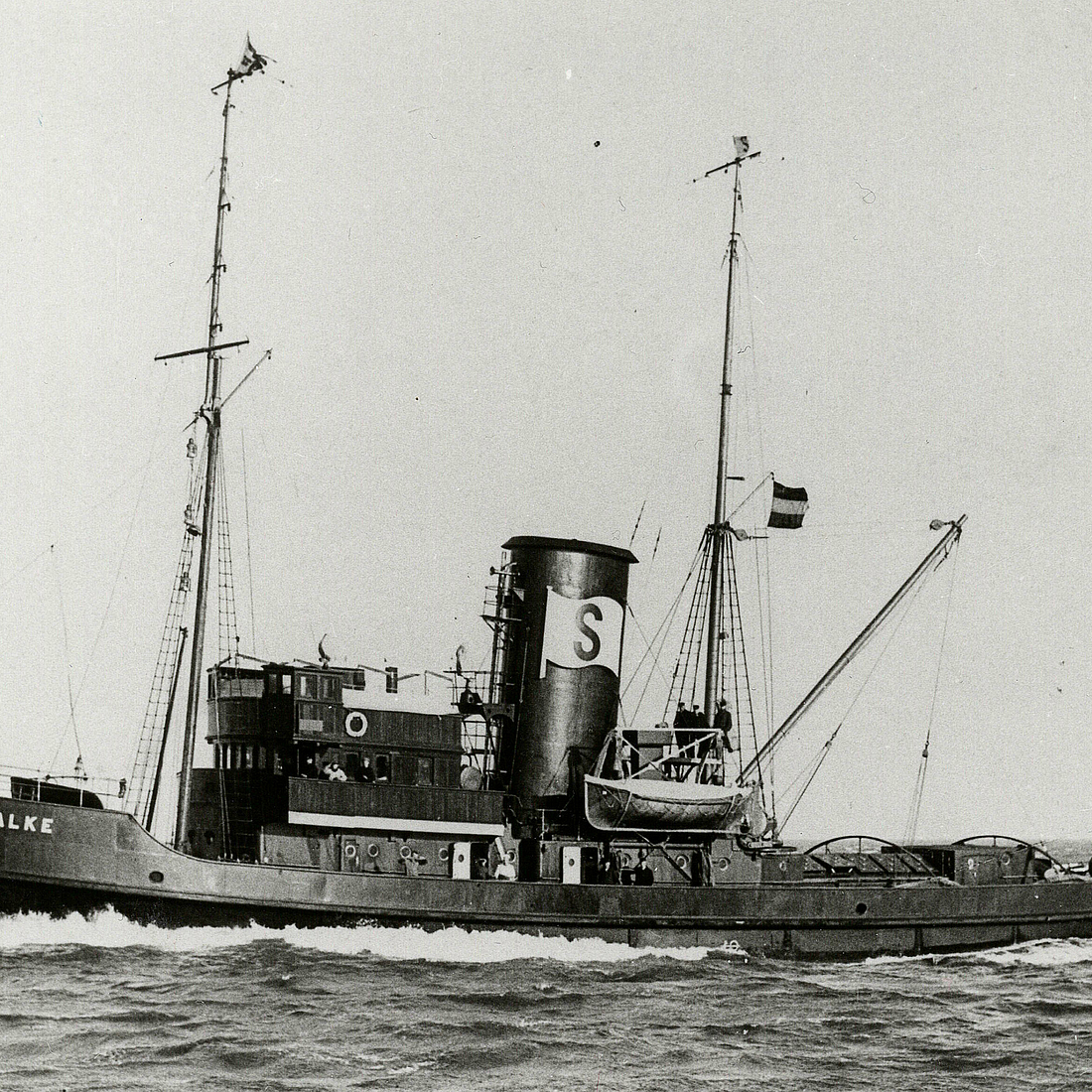Archival item of the month: Christening of the heavy salvage tug SEEFALKE from 1924
Every month, the German Maritime Museum (DSM) / Leibniz Institute of Maritime History presents a special treasure from the archive in its "Archival of the Month" series. In September, Dr. Lars Kröger recalls the ritual of ship christening in general and, on the occasion of the 100th birthday of the deep-sea salvage tug SEEFALKE, her christening on 27 September 1924.
In Christian rites, as in shipping, baptism represents a transition. In both cases, the "work" is already in its full glory and is now being consecrated for its intended purpose. In the case of infant baptism, it is the first step on the path to a Christian life; in the case of the ship, it is the transition from a structure on land to a watercraft.
Ship christenings are very much based on the Christian rite: the holding of a (semi-)public celebration, the solemn proclamation of the name, the consecration with water or a bottle of sparkling wine, the presence of a godmother and the reading of a christening motto. In both cases, the christening saying has the task of accompanying the child and the vessel throughout their lives and giving them a kind of motto. At a Christian baptism, the parents usually choose a passage from the Bible which is intended to give the child protection, courage or a motto for life. This is basically no different for ship christenings. However, the words for ships are freely chosen and can often be used as a medium for messages of a certain mindset.
This is also the case with the christening of the tug SEEFALKE on September 27, 1924 at the Tecklenburg shipyard in Geestemünde, now Bremerhaven. Mrs. Sophie Schuchmann was available as godmother. She was the wife of Behrend Schuchmann, who was head of the Schuchmann shipping company at the time and therefore also the builder of the SEEFALKE. She had the honor of reading out the baptismal chant. It is not clear whether she actually wrote it. The motto reads as follows:
Deutsche Gedanken und deutsche Kraft
Haben Dich stattliches Fahrzeug erschafft
Uns zum Gedeih’n.
Ehe Du eilst in das Element
Das Dich fürder sein eigen nennt,
lasse Dich weih’n.
„SEEFALKE“ will ich mit Namen Dich taufen,
falkengleich sollst durch die Meere Du laufen,
kühn und in Eil.
Mit jenes Vogels blitzgleicher Schnelle
Bringe Du zu gefährdeter Stelle
„Rettung und Heil“
„SEEFALKE“ über dem Wellensaum
Scharfen Auges durchdringe den Raum.
Schaue nach Beute.
Siehst Du sie, stoße mutig herab,
daß Du sie Schirmst vorm Wellengrab,
Güter und Leute.
„SEEFALKE“ mach Deinem Namen Ehr‘
Ruhmvoll durchfurche das weite Meer.
Kreuze mit Glück.
Dräuen die Wogen auch noch so sehr,
als ihr Bezwinger wiederkehr
stets zu uns zurück.
The saying is not available as an original document from 1924, but as a copy. The poem consists of four verses and is a rhyming verse, as used in the well-known song "Der Mond ist aufgegangen".
The wording of the baptismal motto must clearly be seen from the perspective of his time in the Weimar Republic, especially the opening. The ship was built at a time which today is referred to as the beginning of the Golden Twenties. After the end of the First World War and the resulting economic crises, an economic upturn began from around 1924. This clearly resonates in the text.
The verse addresses important characteristics of the ship in a pathetic form typical for such a dedicatory verse and for the time. The first verse sets the scene and organizes the events. A ship was built for the benefit of the shipowner and is now to be consecrated before launching.
In the second verse, the name SEEFALKE is revealed and the reason for the choice of name is given. Various (supposed) positive characteristics of the bird of prey are emphasized, whereby rescue and salvation are questioned.
In the third stanza, the characteristics of the bird continue to be related to the ship, with the ship coming more to the fore. The prey of the bird of prey is equated with shipwrecks in distress. The economic expectation of the ship is very much in evidence here. It is not a sea rescuer, which primarily has the welfare of people in mind. In a typical rescue situation, the seafarers in danger have already been picked up by other ships. The tug is equipped in such a way that a ship in distress can be secured and towed to the port of rescue. At the same time, the ship was in constant competition with rival companies.
The last verse rounds off the christening verse with a wish for the success of the venture and a safe return home. At the christening, it is very clear that the ship has to go into danger for its service. Here, too, the combative tone reads as conqueror again, which corresponds to the entire motto. It is noteworthy that the classic dragging of large objects does not play a role. These were regularly carried out by the ship and its crew. Nor does the crew itself play any role. Only the ship is addressed in person.
Ship launches have always been used as a political platform and in this context can perhaps be compared to the laying of foundation stones, topping-out ceremonies or inauguration celebrations. An economic and technical success is used to send other messages and signals to the world. The christening was usually followed by the launching. This was and still is a certain risk. In the worst case, the entire ship could be lost in front of all the guests. In the case of the 399.90-metre-long container ship BERLIN EXPRESS, the shipping company Hapag-Lloyd decided to have the ship sailed from South Korea to Hamburg, where Elke Büdenbender, the wife of German President Frank-Walter Steinmeier, performed the christening ceremony on 2 October 2023. The christening of the DSM EXPLORER on 17 July 2024 inside the German Maritime Museum was unusual, but the ceremony followed all the rules of the art. The research vessel installation at the heart of the new permanent exhibition "Ship Worlds - The Ocean and Us" was thus given a name and will hopefully, like the SEEFALKE, serve its intended purpose safely for a long time to come.
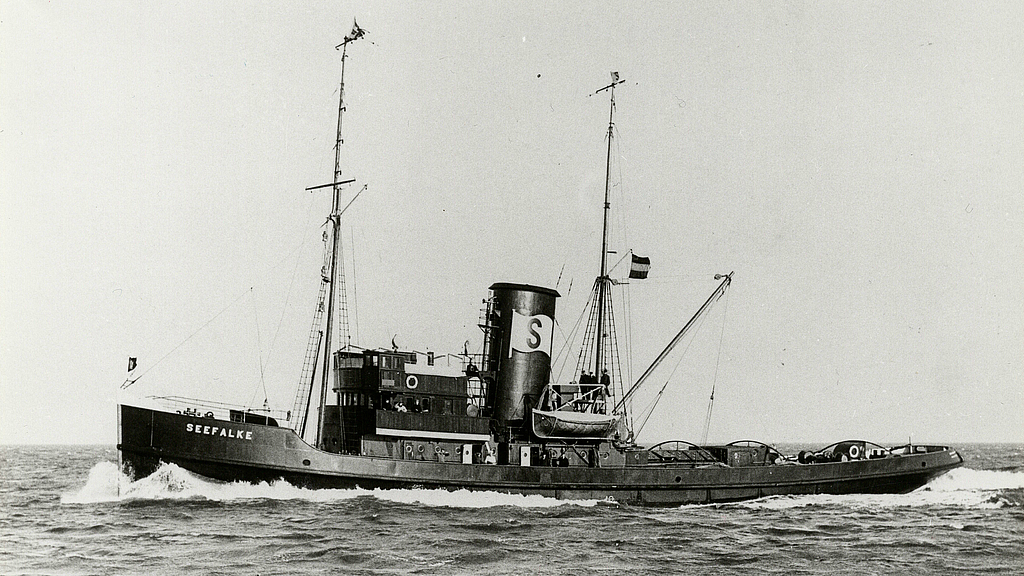
The SEEFALKE on the open sea. As an ocean-going salvage tug, she came to the aid of ships in distress at sea.
Photo: DSM / Archive
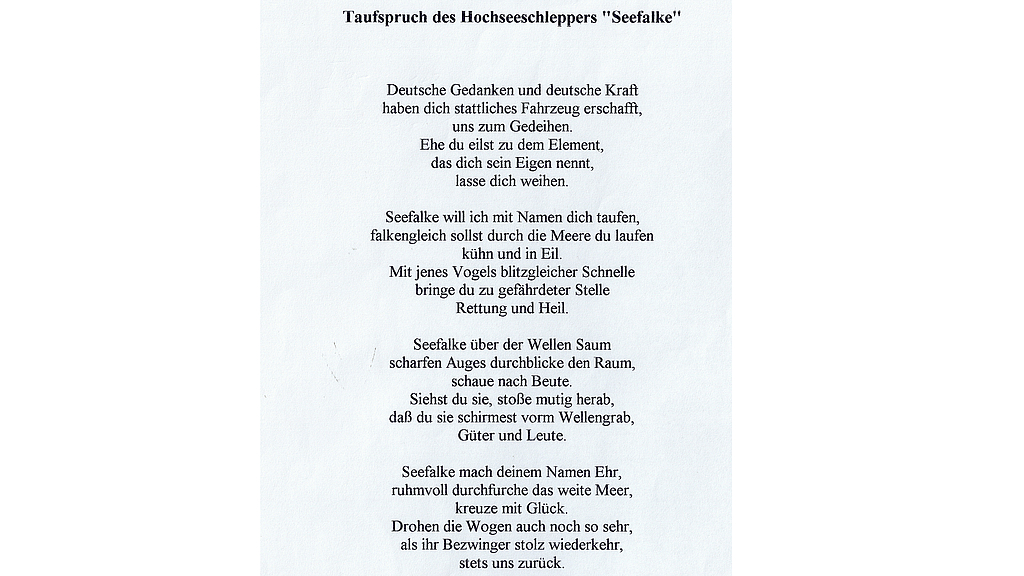
The baptismal motto is a copy, not the original.
Photo: DSM
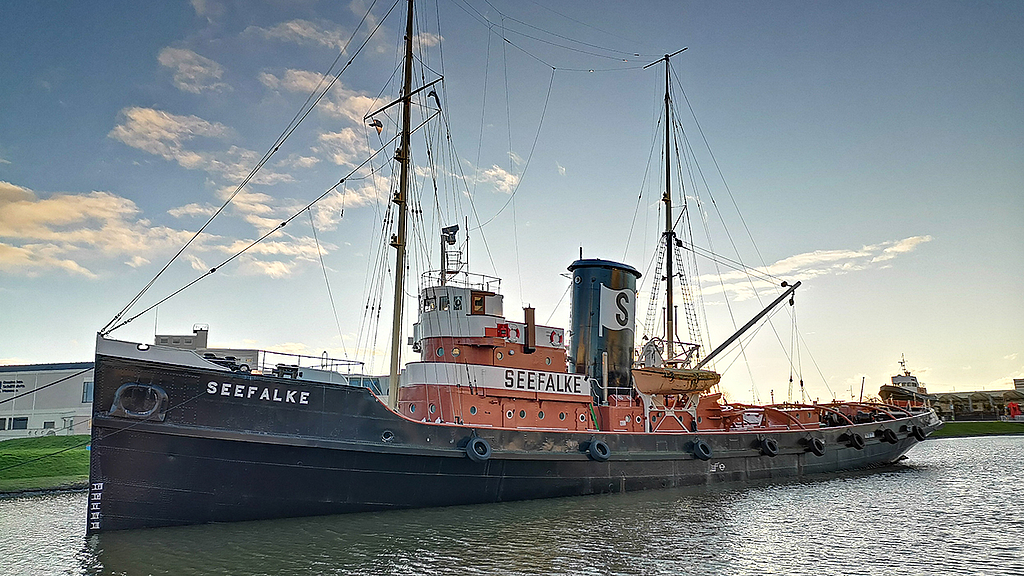
The SEEFALKE has been moored in the museum harbor since 1970.
Photo: DSM / Lars Kröger
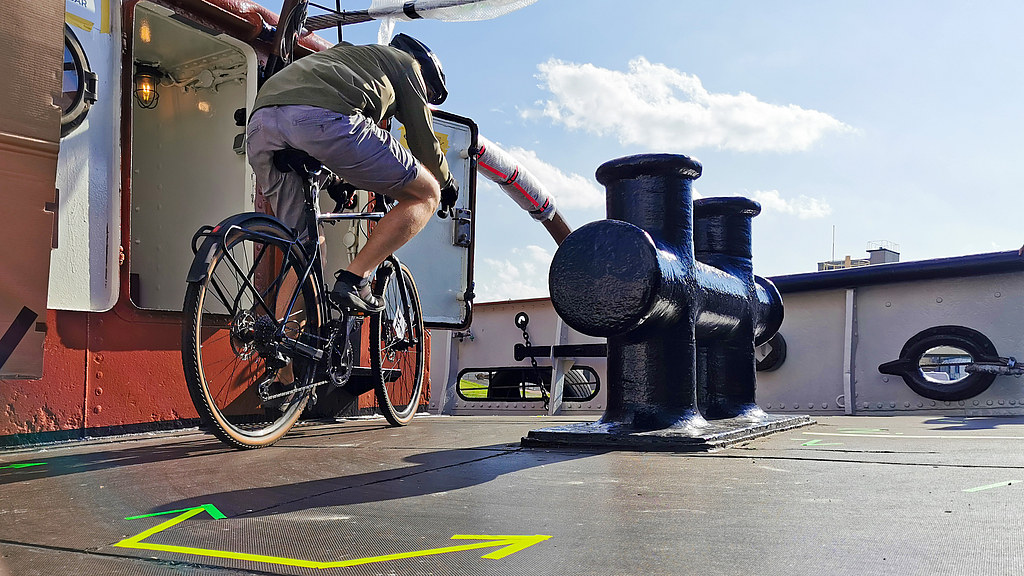
The SEEFALKE has been moored in the museum harbor since 1970.
In 2024, the DSM is celebrating the 100th birthday of the ocean-going salvage tug with various activities. For example, the first Schifssdeckkriterium - a cycling race on board - took place on the SEEFALKE.
Credit: DSM / Annica Müllenberg

